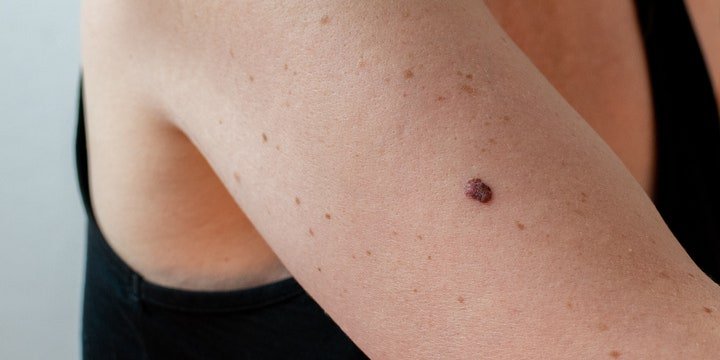Again, though, skin cancer knows no boundaries, Culbreth stresses, and it can strike people who always tan and never burn. If you are Black or brown, you are at lower risk of skin cancer in general, but, Dr. Stevenson points out, at increased risk of a rare and more aggressive melanoma subtype called acral lentiginous melanoma. It typically appears as dark spots on the feet or hands, she says, or as “streaks” under the nails. (Research has shown that people with darker skin tones are less likely than those with lighter skin tones to survive melanoma and that they are often diagnosed at later stages, when the cancer is more difficult to treat.)
As for age, it does matter, with skin cancer being more common after age 50. But you’re never too young to develop it, and sunburns and exposures in childhood can end up causing the DNA damage that leads to problems later in life. “These cancers are incredibly common, and I treat many people in their 30s and 40s,” Dr. Stevenson tells SELF.
What you can do
Perform skin self-exams.
Take stock of your skin once a month. Look everywhere, using a mirror to help you, Culbreth says. And don’t forget places like your scalp, soles of your feet, between your toes, and your nails. (The ACS has detailed instructions on how to do a skin self-exam, along with images of what skin cancers often look like.) One hack, Dr. Bryer notes, is to snap pictures with your phone, to help detect changes in your skin over time.
Also keep an eye out for any mole or other spot that’s new, changing in appearance, or sticks out from others like an “ugly duckling.” If something looks off, Dr. Bryer says, make an appointment with your dermatologist if you have one; if not, see your primary care provider. (It’s worth noting that no medical groups recommend that healthy people be routinely screened for skin cancer by a doctor, but some dermatologists do, at least for certain patients.)
Protect yourself outdoors.
This one goes for everyone, regardless of skin tone, all three experts say: Skip indoor tanning, and shield yourself from the sun’s rays. Some general advice on how:
- Hang in the shade whenever you can, especially between 10 a.m. and 2 p.m., when the sun is most intense
- Wear broad-spectrum sunscreen. The Skin Cancer Foundation recommends using an SPF of 15 or higher for everyday life, and 30 or higher if you’ll be in the sun for a prolonged time. And be sure to slather enough on, Dr. Bryer stresses: Adults typically need an ounce—a shot glass full, she says—for full body coverage. Reapply after two hours, or after swimming or sweating., whichever is sooner.
- Culbreth adds these pointers: Protect often-forgotten spots like the scalp and the ears (with sunscreen and/or a hat), and remember that the sun’s rays can find you when you’re riding in a car, too.
- Cover up with clothing, like a light long-sleeved shirt, wide-brim hat, and sunglasses. Dr. Bryer says she’s a “huge fan” of sun-protective clothes (which carry an ultraviolet protection factor label). They’re especially useful, she says, if you’re the active outdoorsy type who constantly sweats or swims your sunscreen off.
The bottom line: As common as skin cancer is, it’s also one of the most preventable and treatable cancers. And, Dr. Bryer says, even if you spent your teens and 20s applying baby oil and roasting yourself under the sun, it’s never too late to start protecting your skin.
“I do tell people that what you’re doing now makes a difference,” Dr. Bryer says. “If you’re in your 30s, 40s, you still have so much sun exposure—so much life—ahead of you. It makes a huge difference.”
Related:
















Leave a Reply